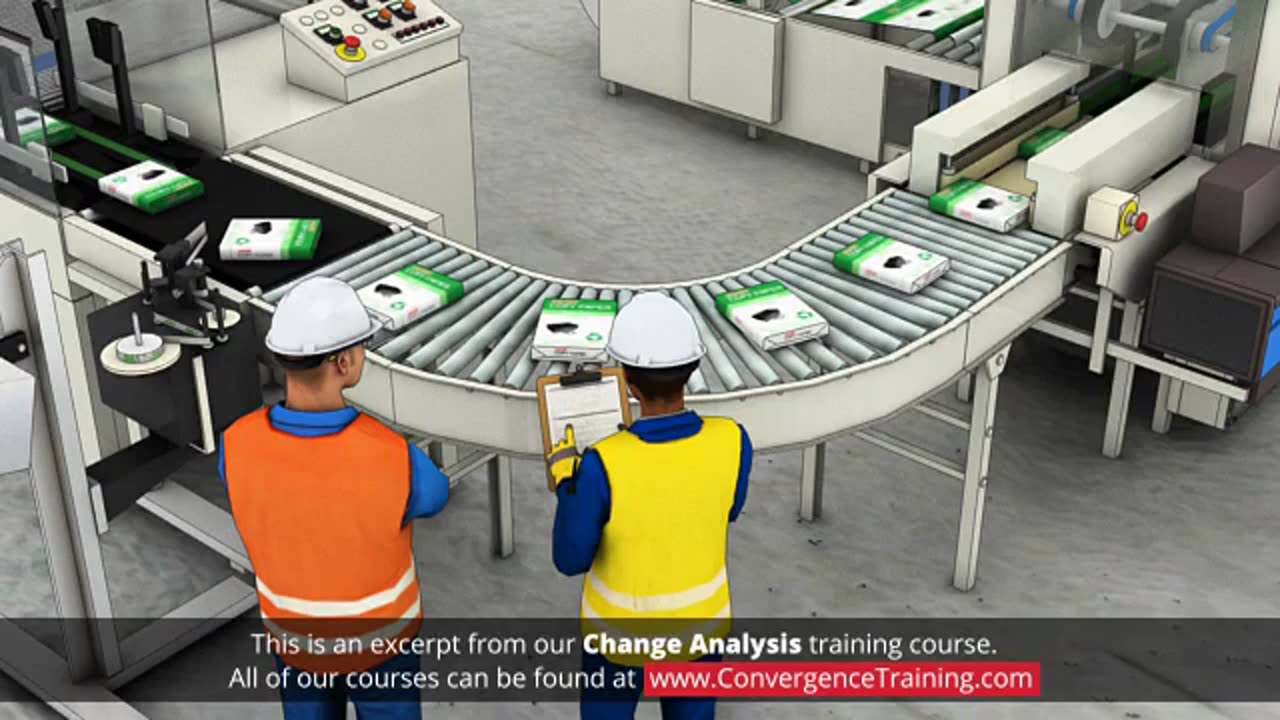Premium Only Content

How to Conduct a Change Analysis
Conducting a **Change Analysis** involves systematically identifying and evaluating the changes within an organization, project, or process to assess their impact, implications, and potential solutions. Here’s a step-by-step guide:
---
### 1. **Define the Scope of the Analysis**
- **Objective**: What is the purpose of the analysis? For example, are you investigating a problem, assessing performance, or preparing for a new initiative?
- **Boundaries**: Determine what areas, systems, or processes are included and excluded.
---
### 2. **Assemble a Team**
- Gather key stakeholders and subject matter experts (SMEs) who understand the processes or systems being analyzed.
- Ensure diverse perspectives to capture all possible changes and impacts.
---
### 3. **Identify the Baseline**
- **Document Current State**: Describe the process, system, or environment before the change occurred.
- Use tools like flowcharts, data logs, or process diagrams to visualize the baseline.
---
### 4. **Document the Changes**
- **List All Changes**: Include changes in processes, technology, personnel, regulations, or external factors.
- **Categorize**: Separate changes into types, such as structural, procedural, technological, or behavioral.
- **Timeline**: Establish when each change occurred to identify correlations with issues or trends.
---
### 5. **Analyze the Impact**
- **Determine Effects**: Assess how each change affects the system, process, or stakeholders. Consider:
- Operational efficiency
- Costs
- Employee or customer experience
- Compliance with regulations
- Use tools like impact assessments, cost-benefit analysis, or root cause analysis (e.g., fishbone diagram).
---
### 6. **Gather and Analyze Data**
- Collect quantitative and qualitative data related to the identified changes. For example:
- Performance metrics before and after changes
- Employee or customer feedback
- Incident reports
- Look for patterns or trends in the data.
---
### 7. **Prioritize Changes**
- **Evaluate Criticality**: Which changes had the most significant positive or negative effects?
- **Focus Areas**: Identify high-priority changes to address or leverage.
---
### 8. **Develop and Implement Recommendations**
- Propose actions to address negative impacts, such as process refinements or corrective measures.
- Highlight best practices for replicating positive changes.
---
### 9. **Communicate Findings**
- **Report**: Prepare a detailed report summarizing the changes, impacts, and recommendations.
- **Presentation**: Share findings with stakeholders to align on next steps.
---
### 10. **Monitor and Evaluate**
- Track the outcomes of implemented changes to assess effectiveness.
- Use feedback to refine processes and ensure continuous improvement.
---
### Tools and Techniques for Change Analysis
- **Root Cause Analysis (RCA)**: Identifying underlying causes of issues.
- **SWOT Analysis**: Assessing strengths, weaknesses, opportunities, and threats.
- **Gap Analysis**: Comparing the current state with the desired state.
- **Force Field Analysis**: Examining forces driving or resisting change.
Would you like help tailoring this approach to a specific type of change?
-
 6:43
6:43
HSESafetyInformation
1 month agoLahori Chanay Recipe - Lahori Cholay Recipe - Chana Chana Masala
39 -
 4:25:26
4:25:26
Drew Hernandez
11 hours agoKARMELO ANTHONY FAM BUYS NEW CAR, BIG LETICIA IS SHOOK & EL SALVADOR ILLEGAL IS A WIFE BEATER?
66.4K21 -
 1:15:02
1:15:02
Man in America
11 hours agoTHE GREAT TAKING: They’re Coming for YOUR Assets—the Sinister Plan Exposed w/ James Patrick
34.3K13 -
 1:55:55
1:55:55
Amish Zaku
5 hours agoCall in Creations EP# 10 Featuring GamerGril
20.4K -
 1:11:52
1:11:52
Omar Elattar
10 hours agoThe Ex-Marine Millionaire: "How I Turned My $26K in Savings to $70M at 35!"
40.5K2 -
 3:15:44
3:15:44
I_Came_With_Fire_Podcast
13 hours agoChina Trade War | Driving Miss Perry | German Court
27.1K4 -
 1:37:07
1:37:07
Glenn Greenwald
6 hours agoAre We Moving Towards War With Iran? PLUS: Zaid Jilani on the El Salvador Deportations and Harvard’s Fight Against Trump | SYSTEM UPDATE #440
115K52 -
 1:42:53
1:42:53
Badlands Media
21 hours agoAltered State S3 Ep. 24: Letitia James Exposed, Harvard's Fall from Grace, and the Woke Hollywood Implosion
63K15 -
 LIVE
LIVE
SpartakusLIVE
7 hours agoCustoms w/ Stonemountain64 || Regular WZ DUBS to follow
146 watching -
 4:53
4:53
Esports Awards
18 hours agoG2 JAWGEMO destroys T1 at the MASTERS GRAND FINAL | Esports Play of the Month March
11.3K